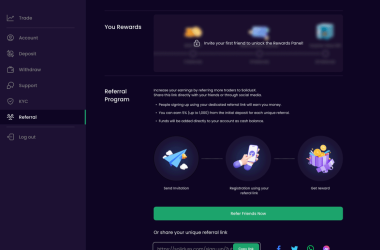In the fast-paced and ever-evolving landscape of modern businesses, the success of an organization hinges on various factors. One of them often remains overlooked but is undeniably pivotal—employee attendance tracking. While it might seem mundane at first glance, the practice of meticulously tracking attendance is a cornerstone of effective workforce management. It serves as the bedrock upon which accountability, productivity, and overall organizational efficiency are built.
In this era of remote work, flexible schedules, and diverse workplace arrangements, the need for comprehensive attendance tracking has never been more vital. It goes beyond mere record-keeping. It is a potent tool that empowers employers to optimize workforce planning, ensure legal compliance, and foster a culture of responsibility and fairness.
Join us on this journey as we uncover the multifaceted benefits of employee attendance tracking and how it contributes to the growth and success of both employees and organizations in today’s dynamic business landscape.
Accountability and Responsibility
One of the primary objectives of tracking employee attendance with a quality employee tracker system is to foster a sense of accountability and responsibility among employees. Once employees know their attendance is being tracked, they’re more likely to stick to their work schedules and arrive for each shift on time, driving productivity and efficiency in your organization.
Tracking attendance helps managers quickly recognize and address chronic absenteeism or tardiness issues, so they can take appropriate actions such as counseling, training, or providing support to employees who may be experiencing attendance problems.
Improved Workforce Planning
Accurate attendance tracking data is invaluable for workforce planning. Through real-time insights into employee attendance patterns, organizations can make smarter decisions regarding staffing levels, shifts, and scheduling. This ensures there are enough employees available to meet business demands, leading to enhanced customer satisfaction and reduced labor costs.
Workforce planning based on attendance data allows organizations to quickly recognize trends and make adjustments as necessary. For instance, if one department consistently faces staff shortages on weekends, organizations can hire more weekend employees or implement a more flexible scheduling system to address it.
Payroll Accuracy
The average HR department spends a total of 35% of its time on payroll. Attendance tracking is closely linked to payroll processing. Accurate attendance records are essential for calculating employee wages, bonuses, overtime, and deductions correctly. Tracking attendance automatically can significantly reduce the chances of errors in payroll calculations, ensuring that employees are paid accurately and on time.
Moreover, transparent attendance records provide a basis for resolving any disputes or discrepancies related to payroll. Employees can review their attendance data to verify that they are receiving the correct compensation for their work, leading to increased trust and job satisfaction.
Compliance With Labor Laws
Compliance with labor laws and regulations is a non-negotiable obligation for every organization. Employee attendance tracking plays a pivotal role in ensuring that organizations adhere to labor laws, including those related to overtime, breaks, and rest periods.
By accurately recording employee hours, organizations can demonstrate their commitment to legal compliance, reducing the risk of costly legal disputes and fines.
Compliance with labor laws fosters a positive workplace culture where employees feel their rights are being upheld, creating an engaging workforce environment.
Performance Evaluation and Recognition

Employee attendance is a key factor in performance evaluations and recognition programs. Consistent attendance and punctuality are often considered when assessing an employee’s overall performance. Diligent employees who consistently arrive on time and maintain impeccable attendance records tend to receive recognition and rewards as a testament to their dedication and contributions.
Conversely, a pattern of poor attendance often hints at underlying performance concerns or a sense of disengagement. By leveraging attendance tracking data, managers can proactively pinpoint employees in need of extra assistance or coaching, thereby fostering an environment for performance enhancement and growth.
Enhanced Employee Well-Being
Tracking attendance isn’t only about making sure employees are present. It also serves to promote employee well-being. Chronic absenteeism or excessive overtime hours can lead to burnout, which has detrimental effects on physical and mental health. By tracking attendance and working hours, organizations can identify employees at risk of burnout and take proactive measures against it.
Implementing flexible work arrangements or offering wellness programs based on attendance data can contribute to a healthier and more balanced work-life environment, ultimately benefiting both employees and the organization.
Final Thoughts
Employee attendance tracking is far more than a routine administrative task. It is a critical component of effective workforce management. It promotes accountability, responsibility, and compliance with labor laws while also contributing to improved workforce planning, payroll accuracy, and employee well-being. Moreover, it enhances performance evaluation and recognition, fostering a positive workplace culture.
To harness these benefits, organizations should consider implementing modern employee tracking systems that use technology to streamline the process and provide real-time data. By taking these steps, companies can create a more productive and engaged workforce in today’s highly competitive business environment. When employees realize that their attendance is valued and monitored, they become more invested in contributing to the company’s success.










